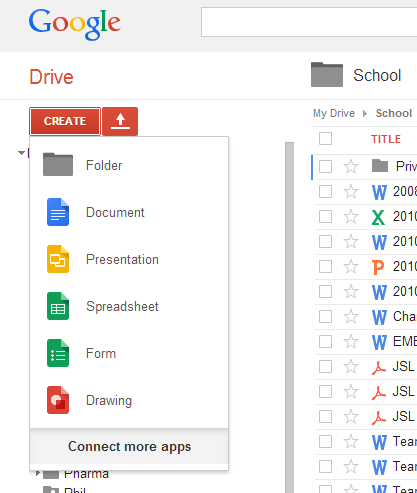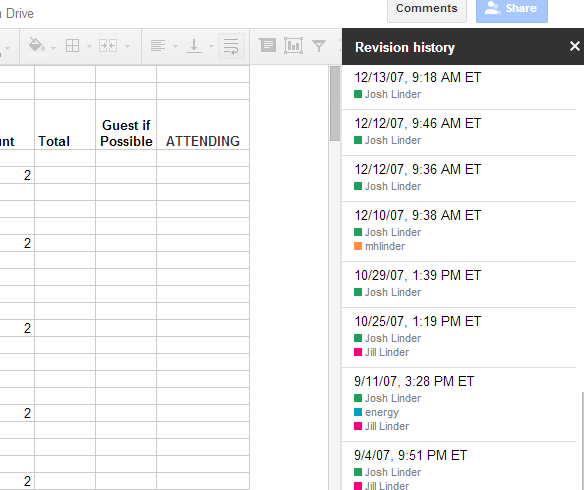Cloud Storage Providers: Comparison Of Features And Prices
Google Drive Cloud Storage - Pricing And Features Overview
Why you can trust Tom's Hardware
Google’s Drive service is an extremely affordable cloud storage option, yet very powerful for collaboration and teamwork. The features around team review and collaboration have been enhanced and polished through increased file change notifications, "live" in-document highlights, and integration with Google Hangouts online meeting tool. Google really thought through the functionality that both consumers and business users need.
In its most simple form, Google allows users to make comments and share files as viewers, collaborators or co-owners. This is simple and fast, yet powerful. While other tools can also do this, Google does the collaboration better through its tight integration between storage and editing tools, and its focus on platform-independent browser-based apps. The apps and ecosystem also work on Chromium zero- or minimal-storage devices.
For word processing, spreadsheet and presentation documents, Google's full-featured and feature-rich Docs, Sheets, Forms and Drawing tools edge close to a "walled garden" approach. However, the document editing isn't required, nor is it forced on users as part of the value proposition.
File changes and updates are outlined when viewing files, including color highlights by user. The activity tab in the browser window shows all file changes and viewing activity within a folder, and lets you see detailed changes when individual files are selected. Unfortunately, we could not see detailed activity on older documents; many documents not edited prior to January 2014 did not have any logged activity in our Drive.
As we tested Google Drive, the lines between the consumer-oriented Drive and Google Enterprise Apps appeared to be thinning. The late June 2014 announcement of Google Drive for Business further validated this. For $10 per month, Google offers auditing, reporting, retention rules and control over desktop client installation. The company also addressed questions around security, specifically documents at rest and in transit, through security controlled via the enterprise administration console and mobile device management.
Google differentiates Drive around cross-platform usability. The iOS and Android apps are very polished, and have improved greatly over the past year. For example, fonts are slim and easy to read, and folders are now displayed on top of the file list, both of which make browsing Drive a much more logical task than with Dropbox, which mixes folders and files together in a list. However, Google removed the built-in editing capability from its Drive mobile app in early 2014, so users must now separately install Google apps to have native editing functionality on the go.
Another interesting feature of Google Drive is its ability to convert Office documents to the native Google format within the Drive Web interface, and pull text from PDF documents and image files. The latter functionality acts as “lightweight OCR” and can save users time if they need the raw text out of otherwise read-only destination formats. This is optional, and can be controlled for corporate purposes through the admin console or via PDF creation rules (previously Google Docs allowed opening password-enabled PDF documents, but this was fixed).
The only perplexing piece of Google Drive is, surprisingly, its search functionality, especially compared to Box. First, the search results are sparse, the quick-results aren't instantaneous, and to engage a full-text search query, you have to take extra steps and go to the full list of results. Second, with search as Google’s core competence, the results screen pales in comparison to what we are accustomed from other Google products (for example, there aren’t highlights or explanations of where, within files, the full-text terms are found).
Google has an incredibly powerful and open Drive SDK, including deep integration with Android app back-ends, and birthing many Drive-centric products like Teamlab Office (an excellent alternative to Microsoft Office). The Google API allows developers to write Drive applications in Java, Python, Javascript, .NET, Ruby, Go and Node.js. Getting started is as easy as setting up an account in Google’s Developer Console and attaching to a Drive-enabled Google account.
The Drive ecosystem and Google's open ethos has resulted in Chrome apps for Microsoft Office, Box and other products and services that arguably compete with Google on various products.
Google Drive Pricing
Current page: Google Drive Cloud Storage - Pricing And Features Overview
Prev Page Dropbox Cloud Storage - Pricing And Features Overview Next Page Apple iCloud Storage - Pricing And Features OverviewGet Tom's Hardware's best news and in-depth reviews, straight to your inbox.
-
Dags Just wanted to add that there is a remarkable cloud solution from Lacie which is called Wuala. I guess they can't include every cloud service in this article but imo it was worth including this one too. It doesn't have the best performance and response like other solutions but data are encrypted in cloud and in your hard drive. I have many cloud services but for important stuff I have Wuala drive.Reply -
S1owJam I would like to add that about a month ago, Microsoft adjusted the file size limit for OneDrive to 10GB per file, for any file, not just Office Docs.Reply -
huilun02 Best cloud service is your own server...Reply
No storage limitation and subscription. Any platform you want and always in your country.
Apart from the many other things you can do with your own server... -
Solandri Reply
What makes you think the NSA is the only organization out there snooping around your files and network traffic?14451880 said:THEY ARE US BASED AND THEREFORE 100% NOT SECURE AND UNDER THE TYRANNY OF THE NSA!
All of these cloud storage services store your files unencrypted. A bored employee at the storage company could browse through your files if they wanted to. I use boxcryptor to seamlessly encrypt my files before they ever reach the cloud storage server. That protects against bored employees, the NSA, Chinese government hackers, the Russian mob, etc.
That's fine in theory, but the reality is that most people's home Internet is asymmetrical with much slower upload speeds than download. Once you add an encryption layer and cloud service layer, file transfer speeds can become frustratingly slow. e.g. I couldn't get a movie to stream reliably with my server sitting on a 35/15 Mbps FIOS connection.14453023 said:Best cloud service is your own server...
No storage limitation and subscription. Any platform you want and always in your country.
Apart from the many other things you can do with your own server...
And the way most people use cloud storage, the whole point is backup redundancy. A storage company takes care of that with your files stored on a RAID (or RAID-like) drive array, backed up off-site on a regular schedule (usually every night, sometimes hourly). The vast majority of people I know can't even make themselves do a monthly backup of their files to an external HDD like I recommend to them.
If you have the time, equipment, and discipline to do all those things yourself and your Internet upload speed is really fast, then a home server is a great way to do "cloud" storage. But for the vast majority of people, having a company take care of all that for you is a better solution. What's the point of backing up your irreplaceable photos on your personal "cloud" server if it's in the same room as your computer and camera when your house burns down? For most people it makes more sense to use a cloud storage company, just make sure to encrypt your files before you hand them over. -
junkeymonkey where are these servers at ?? china? India ? Pakistan? who knows .. security ?/--who knows looking at resent cloud breaches not to well it seemsReply -
alidan @Solandri true, anyone could sneak in, but the nsa has a gun to you when it asks for a backdoor, a back door that any hacker could find and makes the service less secure... i dont use cloud for anything that i'm not giving to people anyway so it doesn't matter to me, i just use them as a file distributer... and in that case, mega is the best for me.Reply -
AndrewJacksonZA Typo and possible ambiguity:Reply
Table on page 1, for OneDrive: "Yes, Built into Office/Windoews 8.x"
Should be "Yes. Also built into Office/Windows 8.x" because I can have full syncing to my Android phone as well, not just my PCs. -
markbanang If you have a decent NAS and home net connection, you can't go far wrong making your own cloud service with ownCloud.Reply
There are Windows, MacOS and Linux desktop clients along with Android and iOS mobile clients. Since data is only stored on your server and clients, there are no storage or bandwidth restrictions other than the disks on your server and the normal restrictions of your ISP. All connections are end-to-end encrypted, so you data is never stored on a computer you don't control, and the the software is Open source (AGPL), so it can be evaluated and audited by security experts. According to the ownCloud website, there is even a VM appliance to make it easy to evaluate the server.


